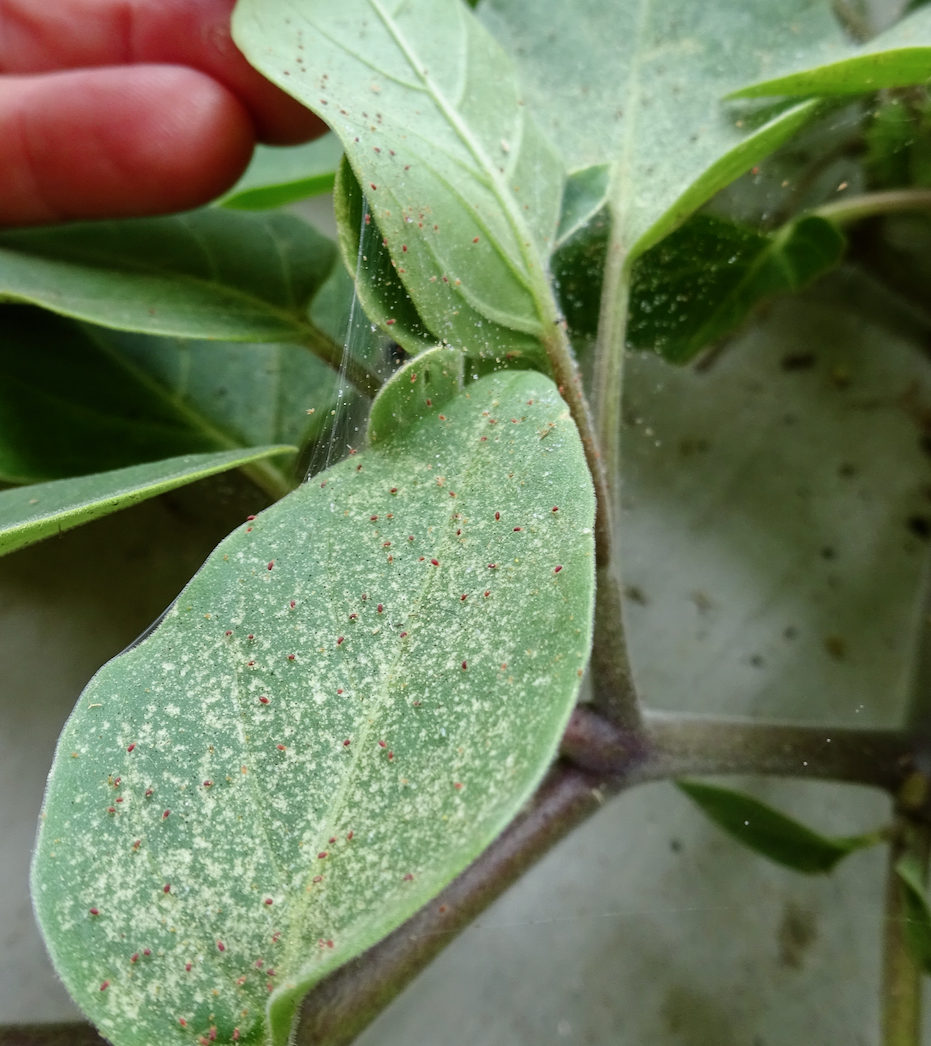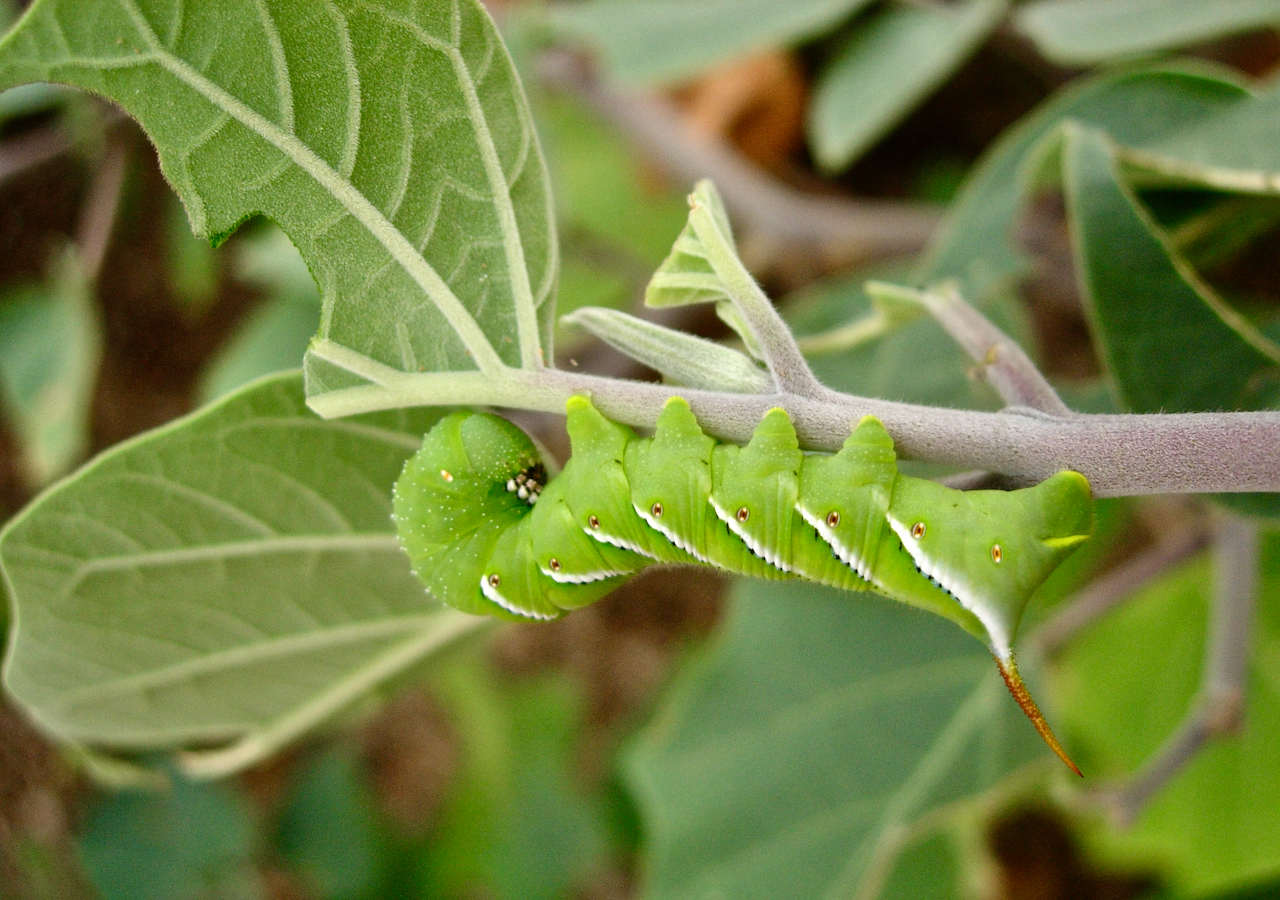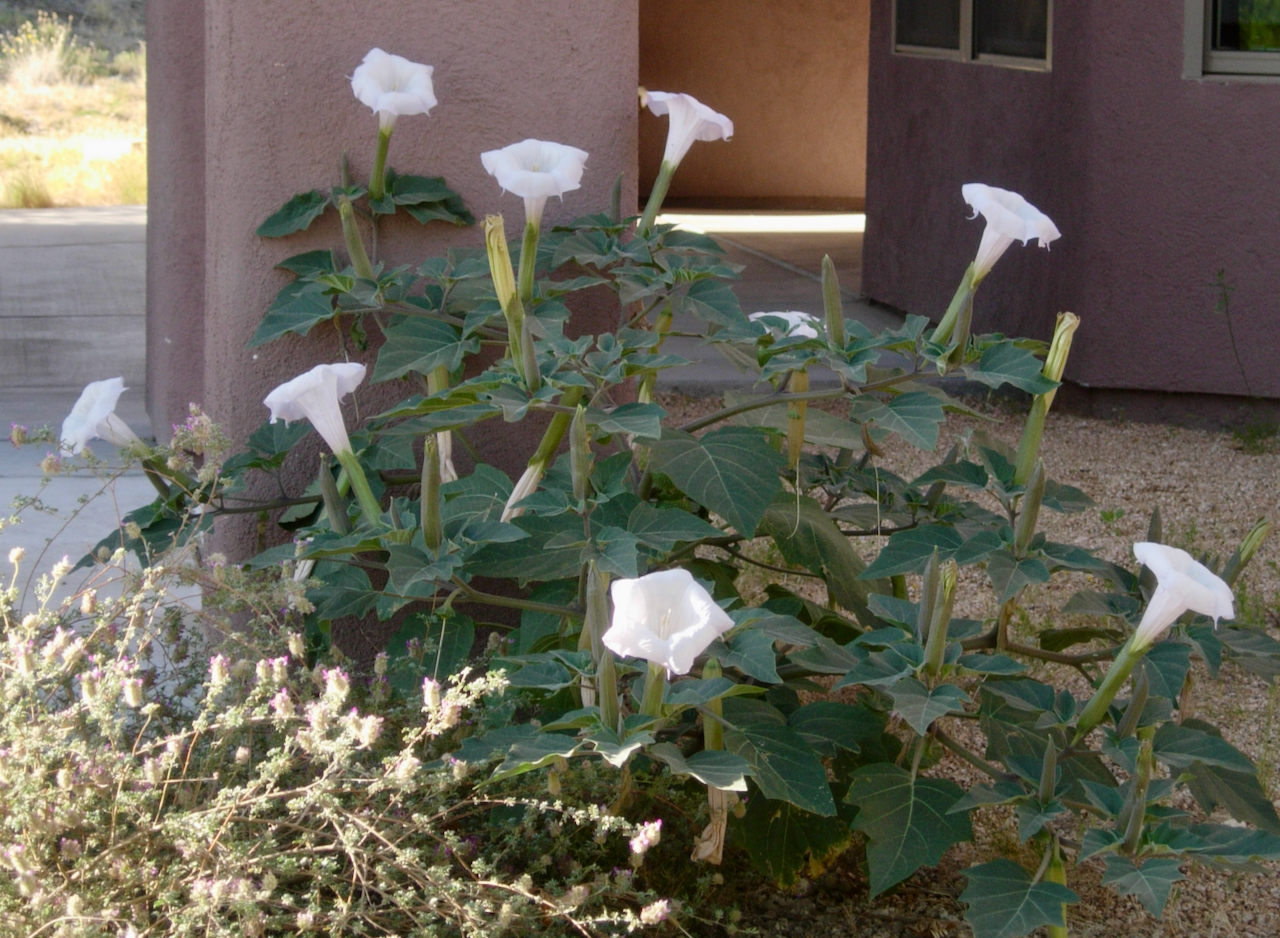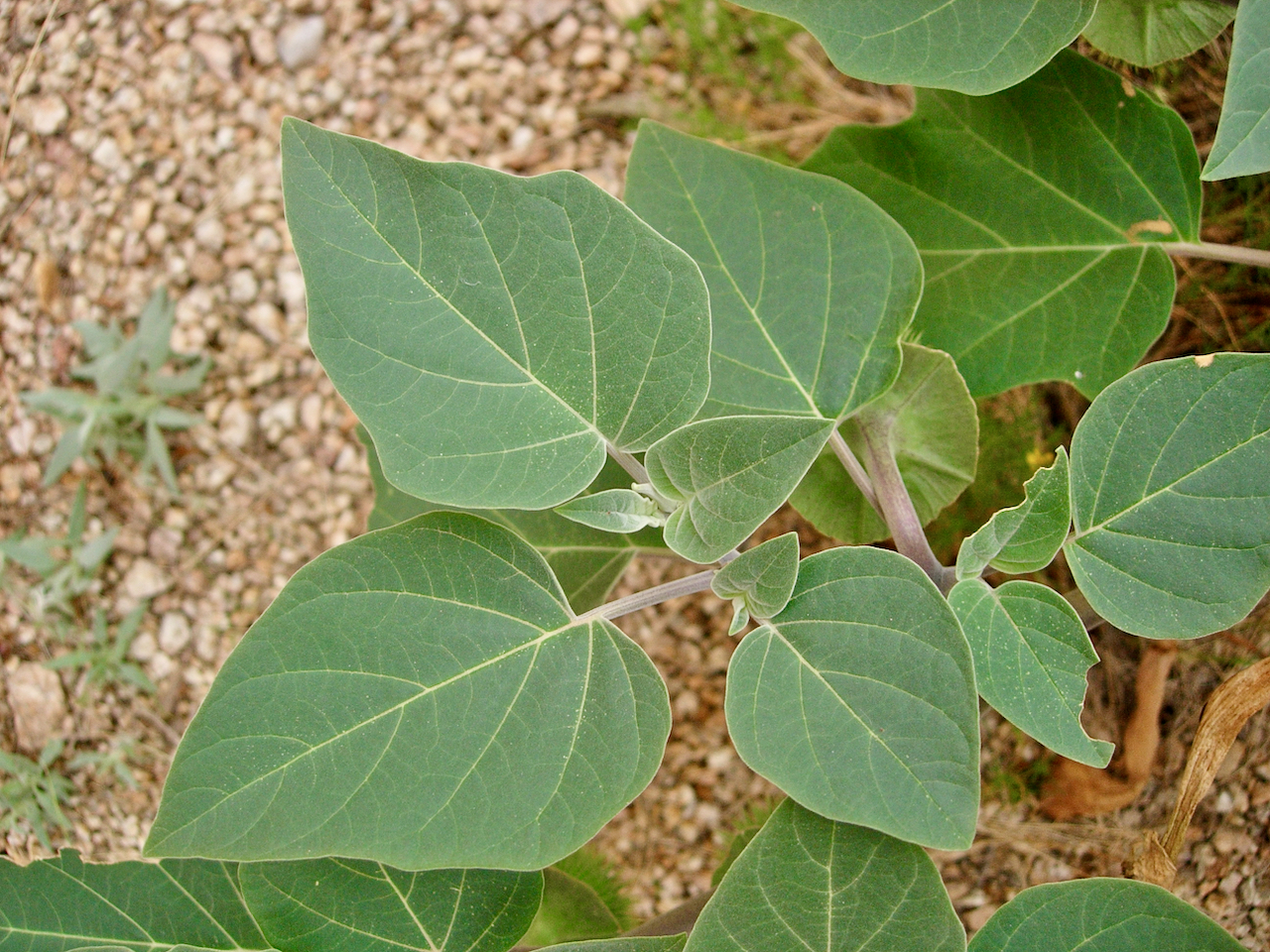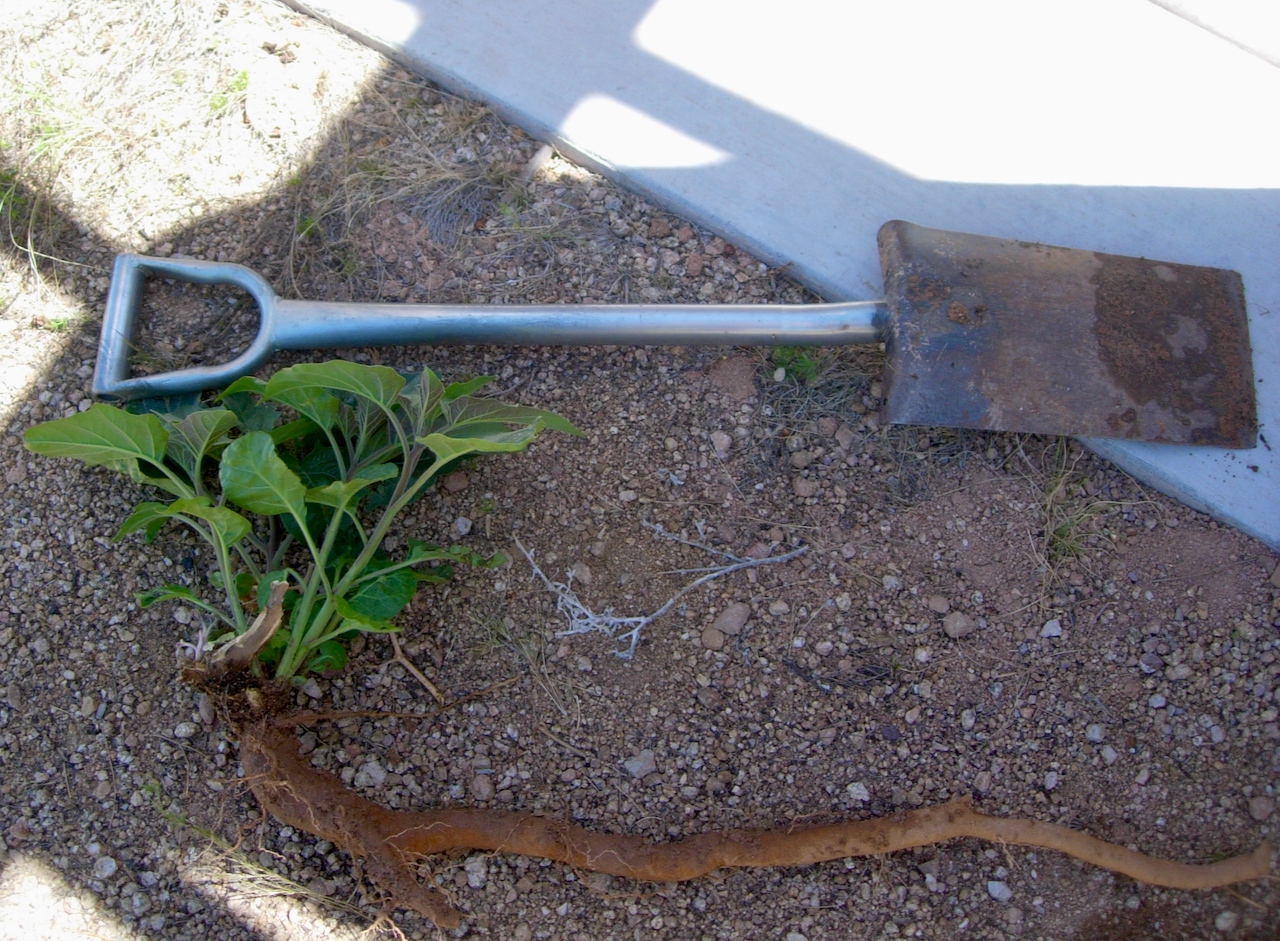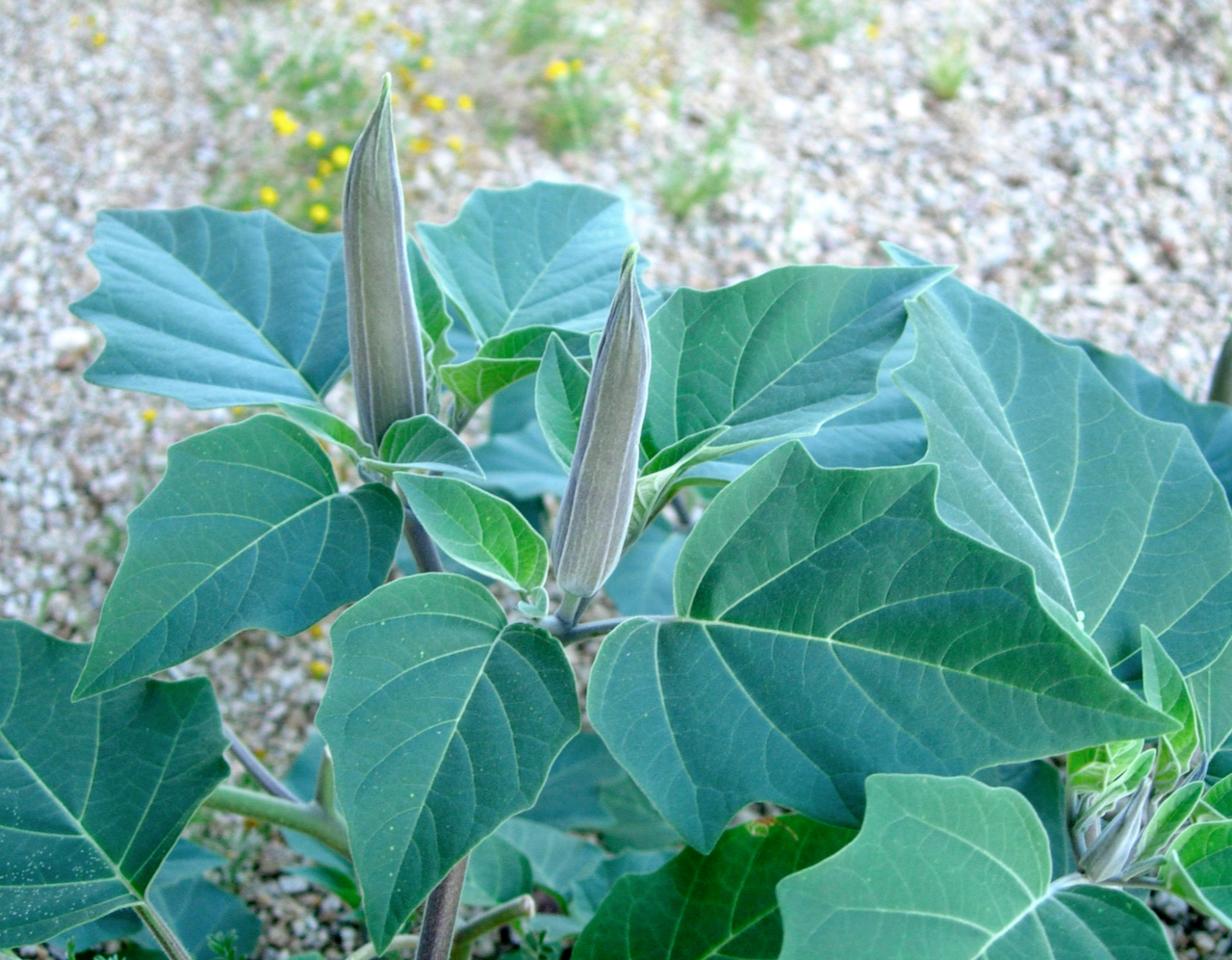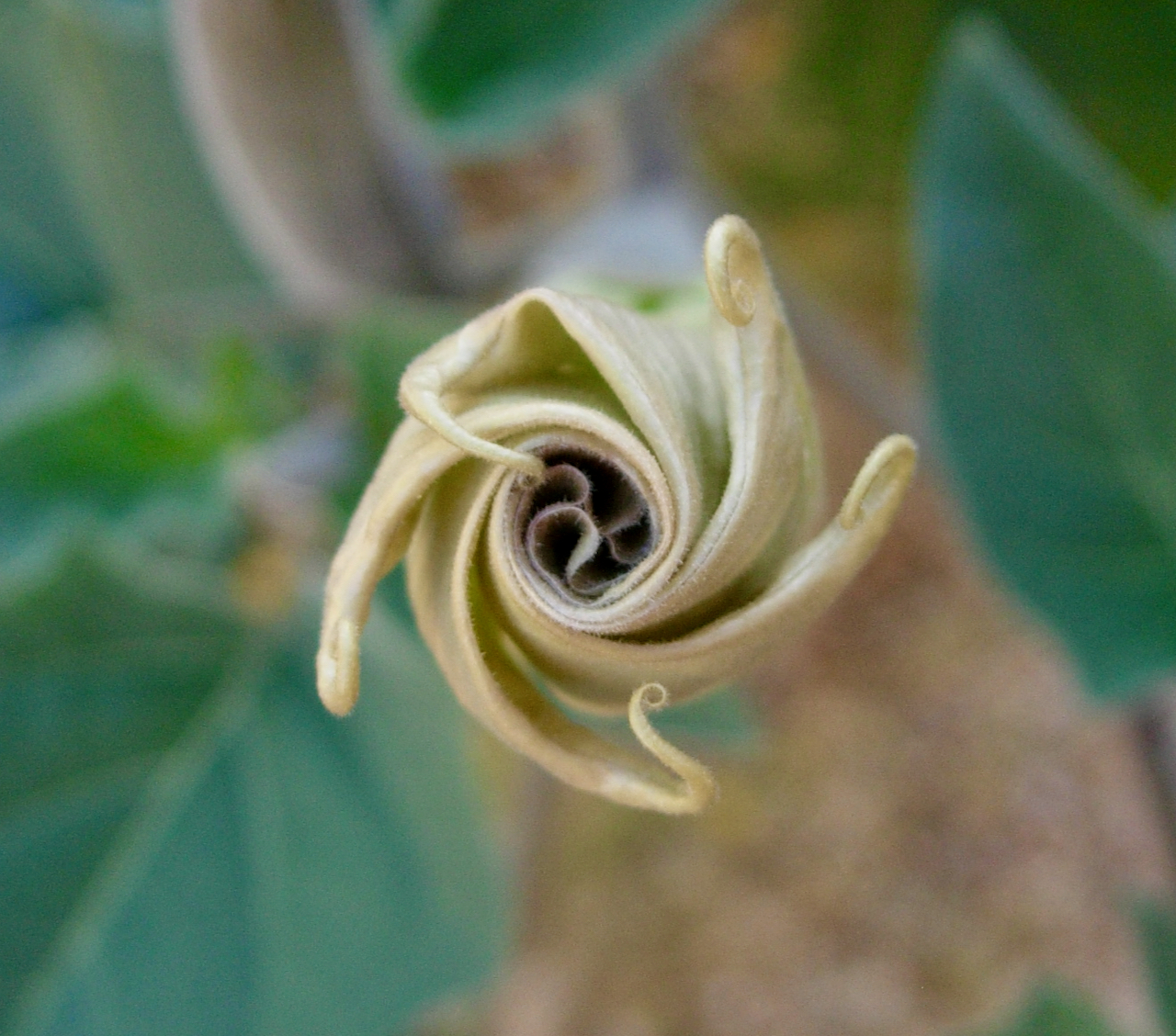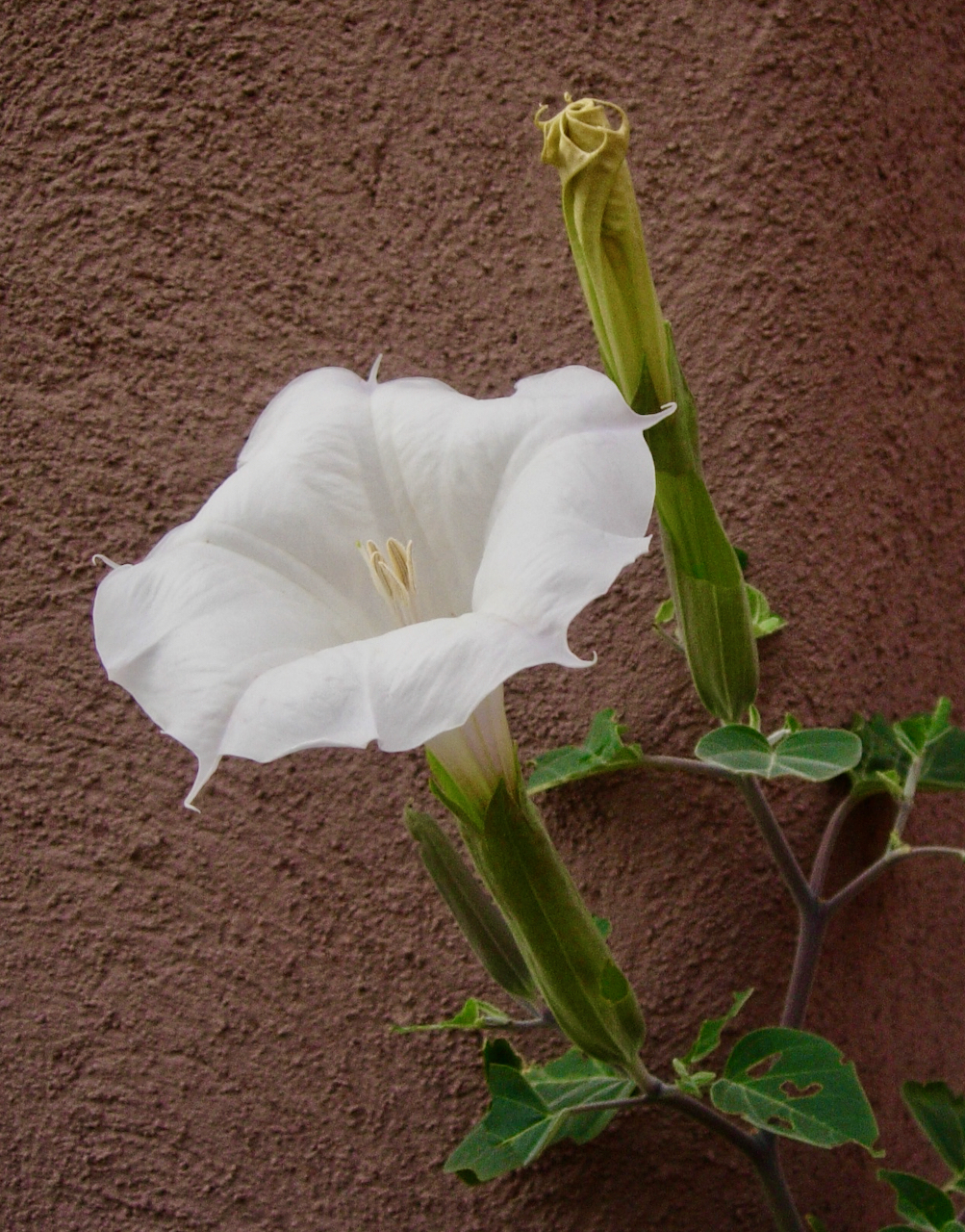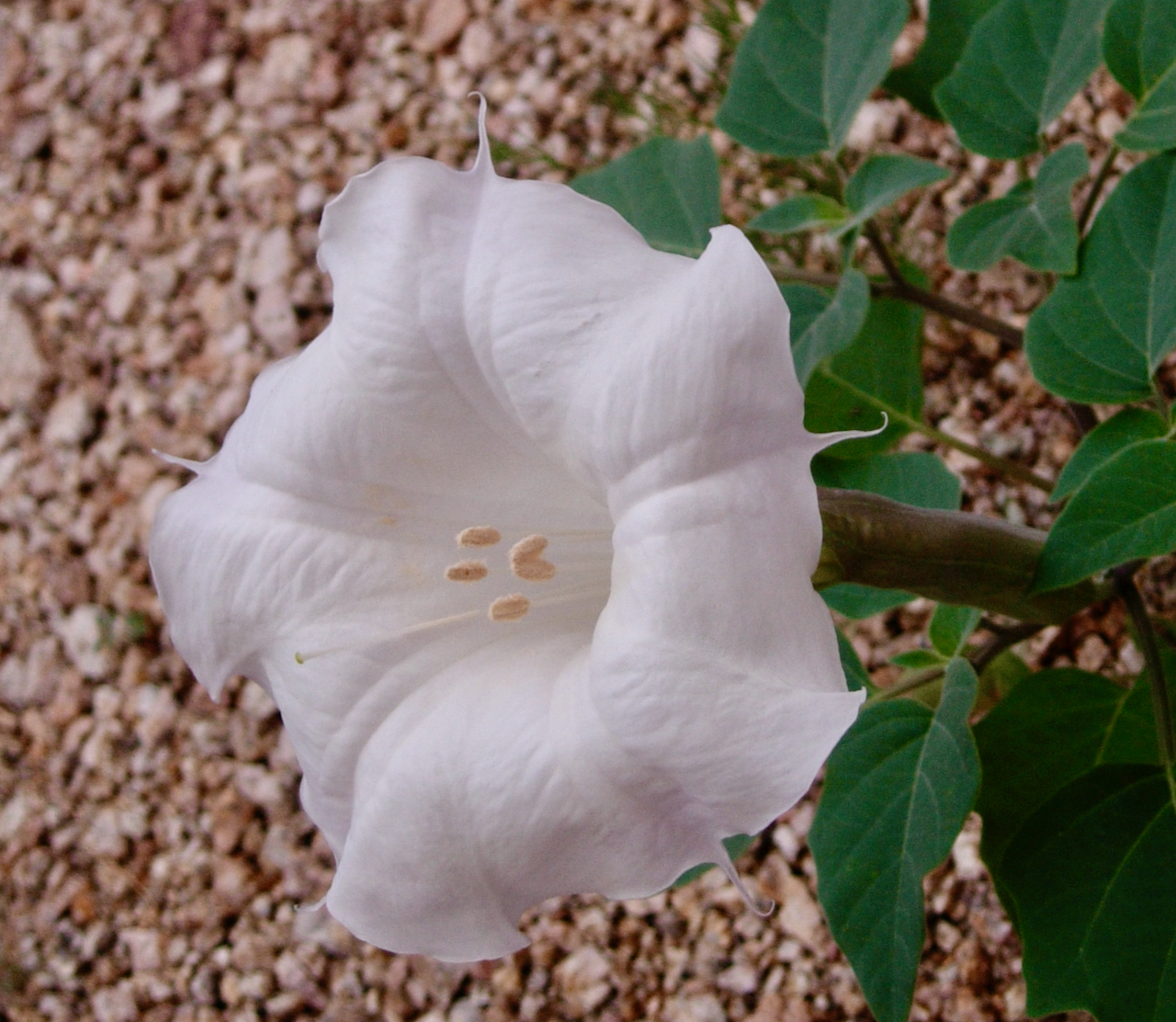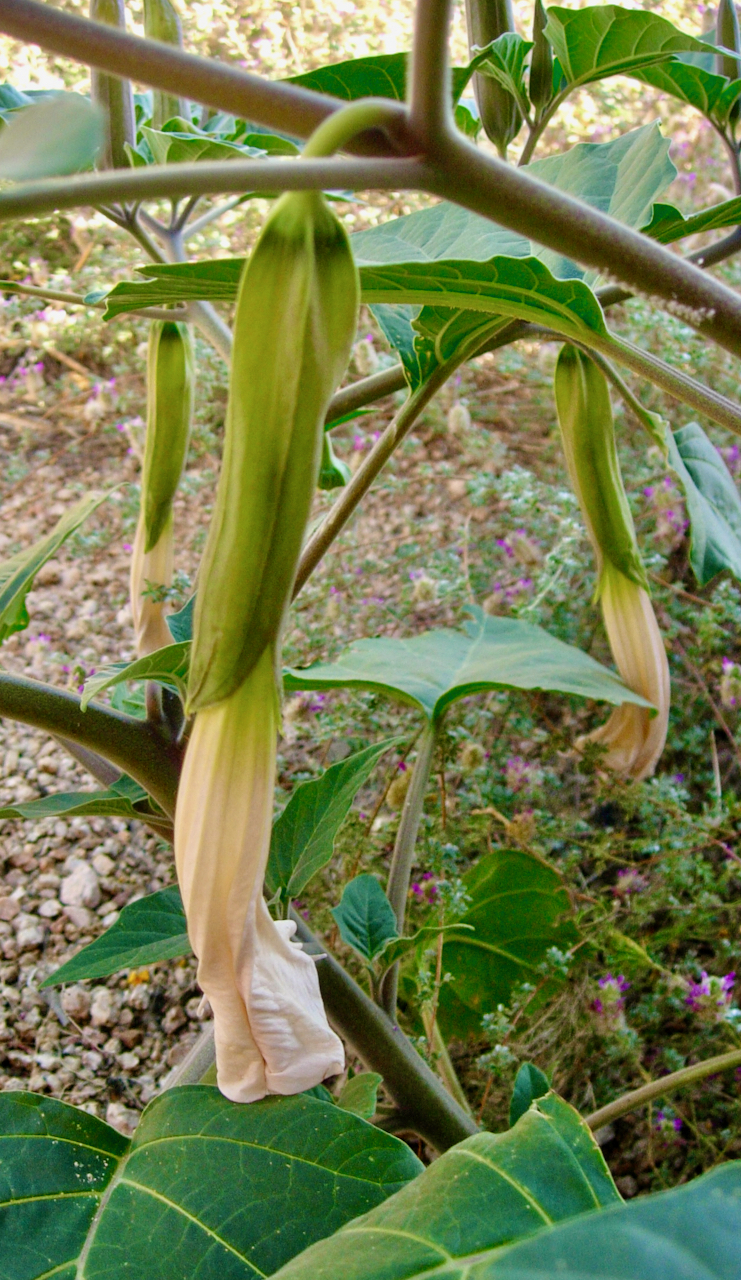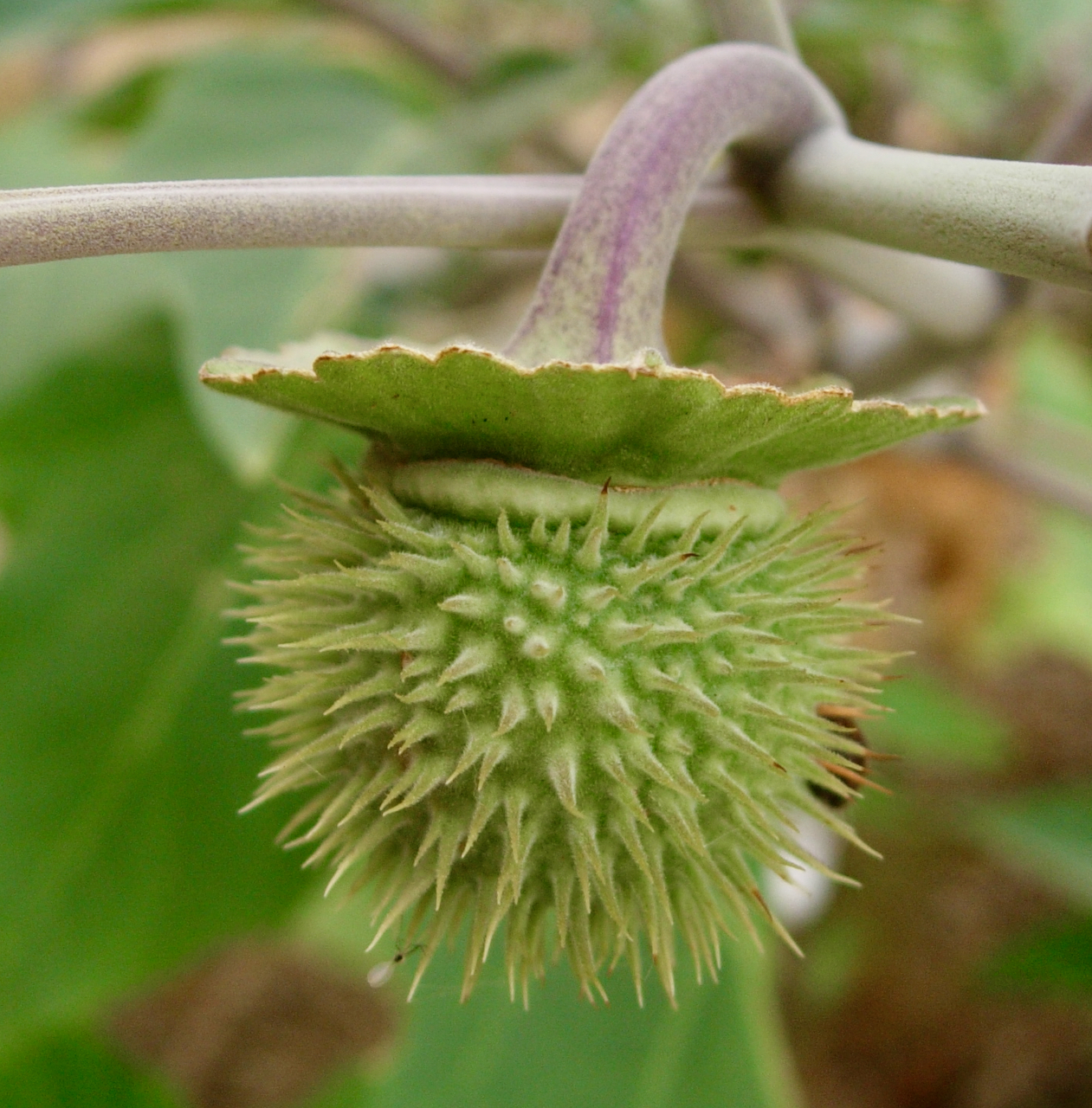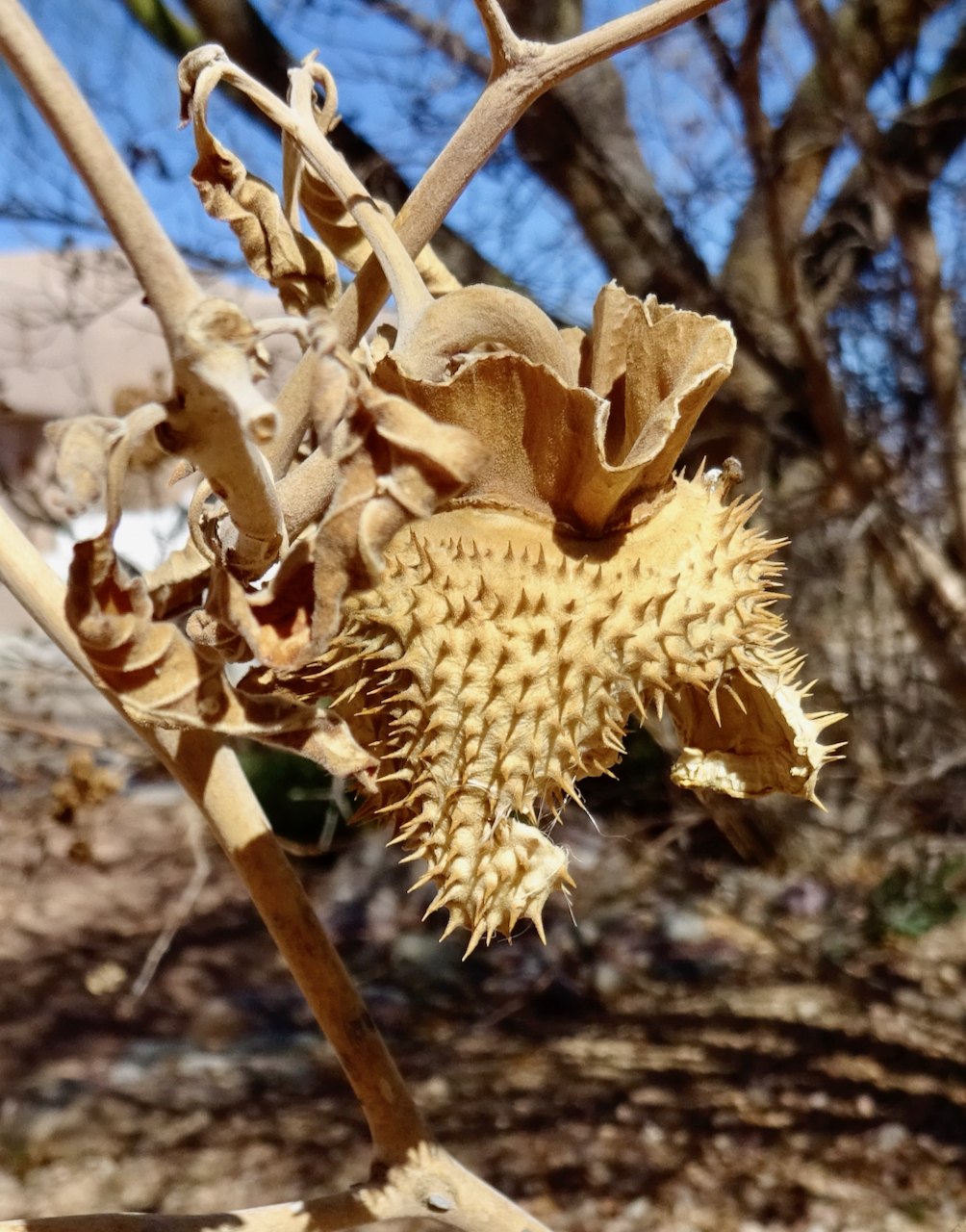Datura
Datura wrightii
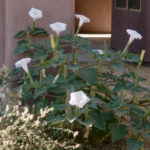
About the Plant
CAUTION! CAUTION! CAUTION!
All parts of this plant are poisonous! It can also cause contact dermatitis in sensitive individuals. Wash hands well immediately after handling this plant!
Datura, also known as sacred datura, thornapple or western jimsonweed, is a perennial that dies to the ground each year. It can easily grow to 2 x 5 feet in just a few months; with access to water, plants will be even larger. Flowers appear in April and the plant flowers on and off all summer, often into October. The flowers open at night and remain open into the morning, later if it is cool and/or cloudy. This limits datura's value as an ornamental. It is perhaps better suited to a natural landscape.
Datura grows easily and reseeds but sometimes resents transplanting. Make sure to keep it well-watered until established. If you don't want datura everywhere, take the time to deadhead every few days. The flowers last only one day and look messy and floppy when they fade. Thus, deadheading improves appearance as well. Once leaves are lost to winter's cold, cut the stems off at ground level. Make sure to wash your hands after you handle this plant.
Spider mites are sometimes a problem with datura. They suck sap from leaves, first creating a white, stippled look and eventually causing the leaves to drop. Use a strong stream of water to remove them or treat with insecticidal soap. It may take more than one treatment to eliminate them. Removing all debris once the leaves have fallen will help decrease the population of mites. In the photo above, you can see the stippling on the center leaf. The small red dots are the spider mites (click to enlarge photo). The dots that appear to be floating in air are on fine webbing spun by these mites.
Datura is a host plant for tobacco hornworms, caterpillars of Carolina Sphinx Moth. They are very difficult to spot in among the leaves and are most active at night and in the cool of the day. In photo above, notice the partially eaten leaf to the left. Datura plants tolerate this feeding well. Though they may look quite ragged and be almost leafless for a while, they will releaf and continue to grow. Look for tobacco hornworms July - September. In photo above (click to enlarge), the 6 legs are tucked under the curled-up head. Five pairs of abdominal protrusions known as prolegs cling to the stem.
Notes:
- There are other datura in Arizona. All are annuals with smaller flowers that usually have some purple on them. Datura discolor and Datura stramonium have purple throats. Datura quercifolia has much smaller flowers, only 2 inches long.
- The flowers of datura point outward or upward when open. The flowers of a related genus, Brugmansia, hang downward. Brugmansia, known as angel's trumpet (as datura sometimes is), is native to tropical South America and can be grown as a houseplant.
Wildlife value: Datura flowers are visited by hawk and sphinx moths (sometimes called hummingbird moths) and by hummingbirds and bees. It is a host plant for Carolina sphinx moth (tobacco hornworm) and five-spotted hawk moth (tomato hornworm). Tobacco hornworm is most common in the Rincon Valley.
More Information
Horticultural information from ASU
Horticultural information from UA Cooperative Extension
Pima Jimsonweed Song and other information from USDA Forest Service
Map of distribution in US (blue color indicates plant is present but not native)
Technical botanical description from SEINet
In books:
Native Plants for Southwest Landscapes by Judy Mielke, page 126.
Perennials for the Southwest by Mary Irish, page 126.
